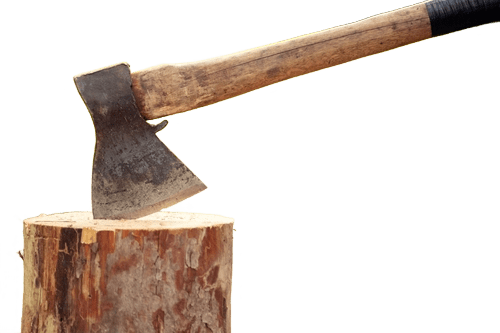As we are almost in summer, now can be a great time to collect firewood, cut it and then store it away for the colder months. Collecting firewood this time of the year can be easier and more enjoyable due to the weather and longer days. The dry weather helps with the seasoning process, and you’re less likely to be picking up soaking wet wood, which has been sat on the forest floor.
Sourcing your own firewood? Most people with a wood-burning stove will already have their logs seasoned and cut to the appropriate size, having usually purchased the wood from a reputable dealer. However, there are still people who prefer to source and split firewood themselves.
If you are considering splitting your own wood for your wood-burning stove, here are a few pointers to help you:
Safety First: Make sure that no one is nearby and that nothing you don’t want to be damaged is nearby! It is also a good idea to use safety goggles and steel-toed boots or shoes.
The Right Tools:
Axe or Hatchet – Good for small logs and kindling
Splitting Maul – Heavier than an axe, designed for splitting large logs
Wedge and Sledgehammer – Useful for knotty or tough logs
Hydraulic Log Splitter – A powered option for splitting large quantities of wood

Wood – Ideally, wood should be seasoned before splitting, as it can help, although people still successfully split green wood.
Look for anything that could cause an issue in splitting, such as nails in the wood or knots in the wood structure; this will make it very hard to split, even if the knot is sat inside a nice, splittable line in the wood.
Split along the wood – Place the wood you intend to cut on a chopping block if you can, or somewhere where it can safely stand up on its own. Look for a split or a line in the wood; using this as an “aim” point will produce the best results, as the line or split is where the wood is most able to quickly and cleanly separate.
Always aim for the centre of the wood to reduce the chances of it breaking its stance, falling over, or firing off at an angle when being hit. Also, marking the line or split you have seen with chalk or something similar can help you when using the axe.
Your positioning – To ensure the maul or axe will hit the wood in the desired location, place yourself in a way that when you swing with straight arms, the head of the maul or axe will hit the wood in the centre. A word of caution here is to err on the side closer to you.
If you do miss, and this can happen often, the maul or axe will hit the ground nearest to you. If you miss and your aim is too far on the other side, you will risk the arm of the maul or axe violently hitting the wood. This hurts, can be dangerous and can break the tool you are using.

When you are going for the split, don’t rely on brute force, but stand with your legs apart a little, pull the axe over your head and then swing it straight forward, building up speed and allowing the weight of the axe to do the work. Trying too hard could mean you could overstretch yourself, risk missing the wood totally, and possibly do yourself an injury.
Quick Tips:
1. Cold weather helps: frozen wood splits more easily
2. Keep your tools sharp and clean
3. Stack split wood in a crisscross pattern for airflow if seasoning
4. Never hold a log with one hand while swinging the axe
5. Clear your chopping area of debris to avoid trips or slips
6. Take rest breaks to prevent fatigue — tired swings can be dangerous
Remember to take your time and be safe. Before you know it, you will have successfully split a load of wood, all ready to season or burn on your stove!








